-
Posts
3,869 -
Joined
-
Last visited
Content Type
Profiles
News and Information
Tutorials
Product Reviews
Supplier Listings
Articles
Guitar Of The Month
Links and Resources
Forums
Gallery
Downloads
Posts posted by erikbojerik
-
-
Before removing the board, I would try to score through the finish with a stiff razor blade. This could be tough if the finish is thick, but not impossible.
Have to ask - why removing the fretboard?
-
Getting a speaker cab to output anything near the 10Hz range is going to be a real challenge - to do it right you'll need a custom cab, ported properly and really deep, probably using "high excursion" speakers which displace a lot more air than the normal speaker. Eminence makes some neo versions that will lighten up the cabinet a bit, but you'll still need a monster cab.
-
Just ground the body core in the usual way - when you connect that to the output jack of the body rim, the grounding will take care of itself (sleeve to sleeve).
This would make me want to take the Tele body core and put it into a Les Paul-shaped body rim.

-
Having radiused many fretboards, the natural inclination - if you're doing it by hand with a radiused sanding block - is to remove more material from the middle. You have to consciously work the ends and check yourself if you don't want it to happen.
-
Think of "stain" and "dye" as two different things.
Dye is just pure color, dissolved in either water or alcohol as the solvent. Either would be fine under Tru Oil as long as you let it dry completely (I'd give it 24 hours after the last application before your first coat of Tru Oil).
Stain usually has other additives in addition to color, like urethane or varnish of some kind, or oil. If you go with stain, it may or may not be compatible with Tru Oil.
I'd go with dye.
-
The sun rises on the final day that the BH-8 is in the shop - Ben is coming today to pick 'er up.
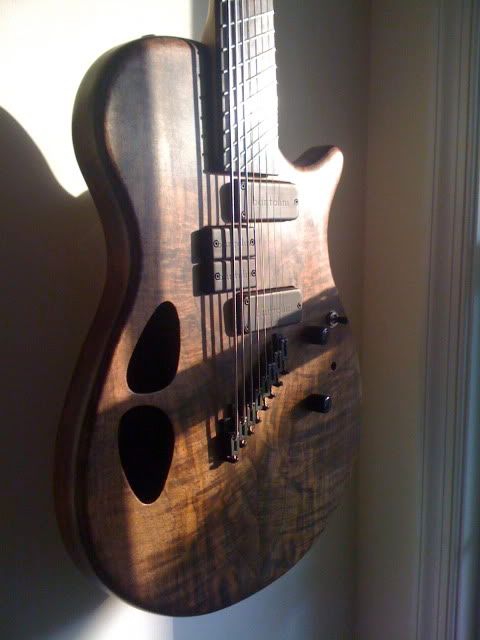
The stacked volume-tone pot arrived the evening before, but I discovered this morning that the threaded part of the shaft was not long enough to protrude through the thickness of the top. So - of course - the day Ben is due to arrive, I am routing more wood from inside the control cavity!!

All's well though. Finally, the man has the instrument in his hands.
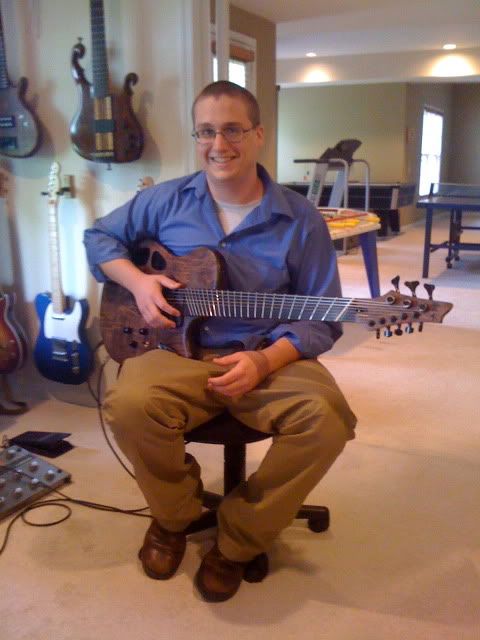
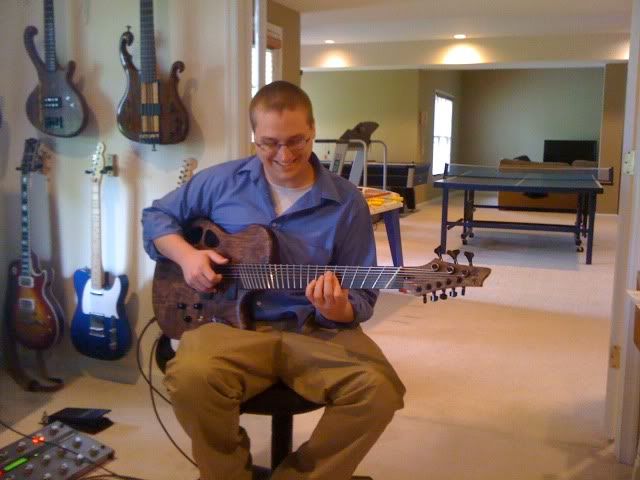
Clips to follow.
-
Pickups - yes, the bit that is extending beyond the outer strings is due to the fact that these pups are mainly modified stock humbuckers and P-bass pickups. Bartolini does not make a 3-string bass pickup
 , nor a 5-string guitar pickup
, nor a 5-string guitar pickup  - and we do not want the bass pups to pick up the guitar strings, and vice versa.
- and we do not want the bass pups to pick up the guitar strings, and vice versa.There are two output jacks (bass & guitar), and they will go to separate amps.
Ben is coming over to pick it up this weekend, I will be sure to record some clips.
-
-
Got it all together this weekend - fretwork done, neck on, hardware on, strung up, set up - and it made its first noise. I LOVE that moment, it is like a child being born.
Or Frankenstein coming to life (take your pick).
Only bummer - the dual-concentric pot I ordered for the stacked bass-tone knob for the bass pickups has a wierd center detent on both shafts, NOT what you want on a volume pot.
 So I ordered a Fender one, and they sent me the wrong pot!
So I ordered a Fender one, and they sent me the wrong pot! 

Updated pics.
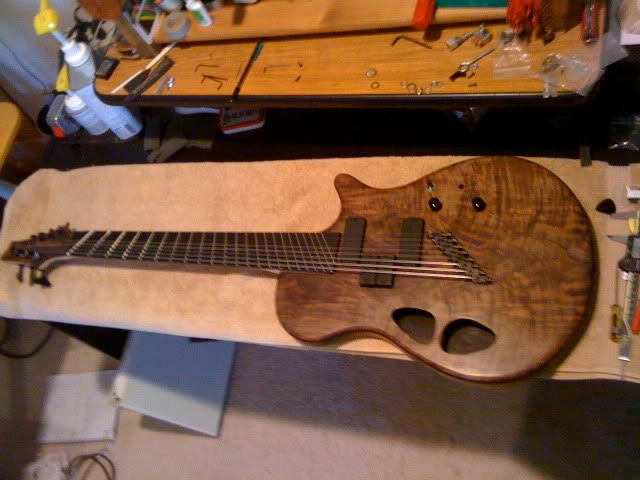
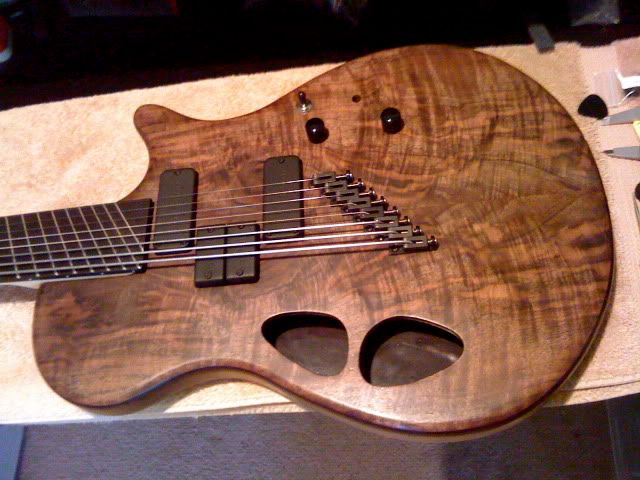
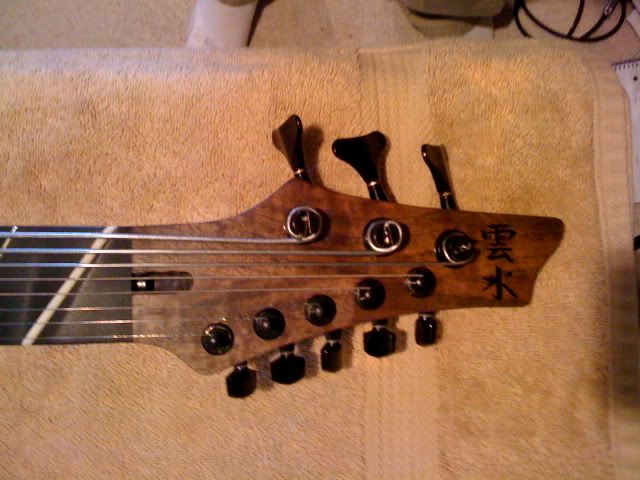
-
-
And the original suggestion would only change the de facto over all scale length.
No It wouldn't. Thats the whole point.
Yes, it would.
-
You gonna do anything about the end of the fretboard? I feel like there's too much wood after the last fret, looks kinda awkward.... maybe add another fret or something....
As it stands, there are 22 frets - not enough room for 24 - and 23 would be even more awkward than a bit of fretboard IMO.
-
Yep its pretty flat - but Ben has some classical training if I recall, and so it would not be the flattest neck he's ever played.
Those bridges are from Ralph Novak - they are basically brass angles with holes drilled into them, each holds a single Strat/Tele saddle, not much to them. The ones on this instrument are the Graphtech stringsaver saddles.
-
The day job has been annoyingly consuming these past few months - but hey, if I didn't have it then I wouldn't be building I guess!
The nut is cut, bolted on the neck, and the tuners and bridges have been fitted. I strung it up to confirm all the various alignments
 and now it is disassembled and ready for Tru Oil.
and now it is disassembled and ready for Tru Oil.This thing will really come alive when the Tru Oil hits it. This weekend.
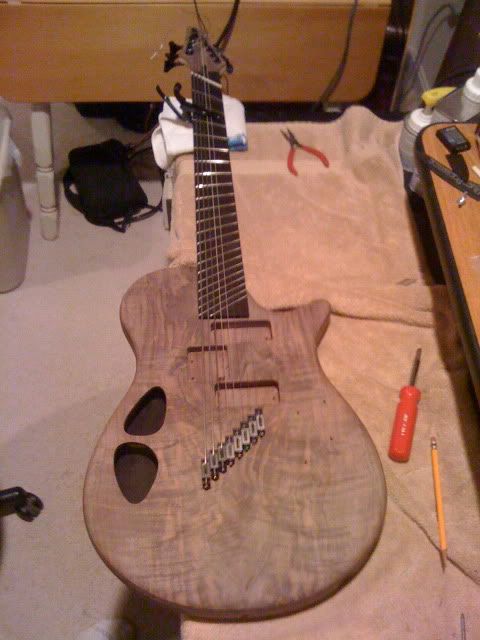
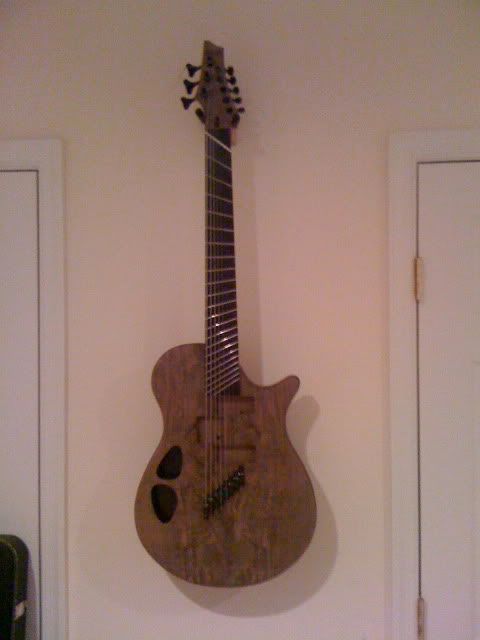
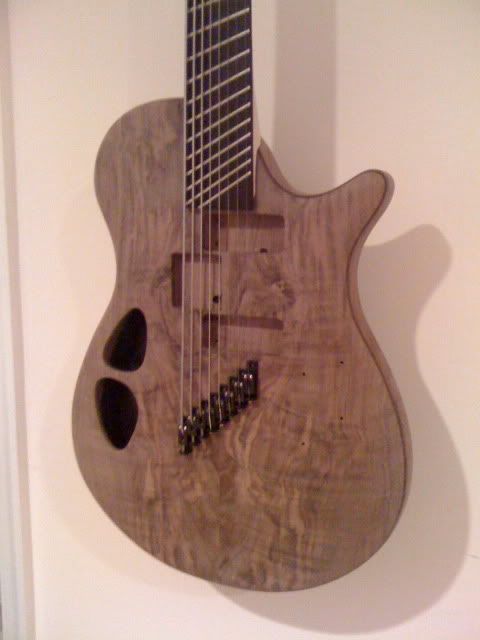
-
Should work fine - just don't expect very good WiFi reception.
-
in the states cocobola is around $16 Board ft for 8/4 stock less or more for thinner or thicker stock
Thanks Spoke! That is by far the best price on coco I've seen anywhere. Most places I look for it tend to run ~$25/bf in the rough.
-
In the UK that is a good deal - pull the trigger!
Even if you sit on them for a year or two, the price of cocobolo will only go up - and it will likely move higher on the CITES radar, which means that one of these days it will be impossible to import.
Make sure you cut yourself out some fretboards when you trim the extra from the back of the neck.
-
You can kick it back in a stand to use it as a monitor and mic it at the same time - then as long as you can hear it over your drummer, you should be fine.
I'd go with the Junior since it has a bigger speaker and I'm not sure the 5W of the Champ600 will get you above drummer level.
-
Hehehe - that did occur to me after I wrote it (but not before)...
-
Some thoughts on an early Monday morning after I returned from an earth science conference in which much was made of deforestation and carbon emissions (rightfully so). During one session of this conference, lumber use (i.e. logging) got a very bad rap when it came to carbon emissions, because (as is well known) trees remove CO2 from the atmosphere - and add oxygen - as long as they are alive. But I decided to do some research of my own this morning to check their numbers when it came to logging.
To start:
Total global forest cover = 3,869,455,000 hectars or 3.87e+13 square meters as of year 2000 (http://www.mongabay.com/general_tables.htm)
Annual forest growth = 500 grams/square meter on average (http://www.rff.org/documents/RFF-DP-97-37.pdf)
When multiplied by global forest cover, annual forest growth = 1.94e+16 grams/yr.
Annual global deforestation = 7,317,000 hectars or 7.32e+10 square meters annually during 1990-2005 (http://rainforests.mongabay.com/deforestation.html)
Average growing forest density is 800 grams/square meter so:
Annual global deforestation = 5.85e+14 grams/yr.
Average annual global lumber harvest = 53 grams/m2 (http://www.rff.org/documents/RFF-DP-97-37.pdf).
When multiplied by the rate of deforestation we get:
Annual lumber harvest = 3.88e+12 grams/year.
This assumes that lumber is harvested uniformly from all areas that are being deforested - so it is probably an overestimate of the amount of timber that is being converted into lumber, because hauling logs from forest to sawmill requires roads (but agricultural deforestation does not).
OK - (drum roll) - so the annual production of lumber (3.88e+12 grams/year) is 0.66% of the total mass of forest that is being cut down on a yearly basis. And this is probably an overestimate. This means that something like 99% of the world's forests are cleared for agriculture or ranching - meaning, the wood is burned.
Interestingly, the proportion of forest cleared by logging (estimated above) is at least 10-20X less than estimated by one environmental group (http://rainforests.mongabay.com/0803.htm).
Burning of wood releases ~1000 kg of CO2 per cubic meter (dry). So for each guitar you make (1-2 board feet per instrument) you keep 3-6 kilograms of CO2 out of the atmosphere (so please do not burn your guitars when you're done with them!).
Commentary welcome.
-
As far as glue/wood ratio, there are MILES of difference between even a hardwood butcher block (stripes not squares) and plywood.
The N-Butcher Block (where N=number of stripes) is probably fine so long as your stripes run the entire length of the body. Endgrain-to-endgrain is the worst and weakest joint ever. But yes - painted it will eventually start to reveal witness lines that will allow you to guess how many pieces are underneath there (my black '93 MIM Strat is 5-piece).
The Gibson sammys are called "pancake" bodies - I think because they are still 13" wide but just constructed from 4/4 stock instead of 8/4. I don't think they have a centerline glue joint in the mahogany, but I could be wrong.
-
That can be avoided by rounding over the arm contour in the underlying mahogany, instead of having an abrupt angle right at the glue surface. I managed to do this with 1/4" cocobolo and it worked fine (pre-bent first with water & heat gun over a pine template).
That's a cool looking bit of padauk.
-
Wow, those are actually amazing!! Do you have more of that in stock?
Nope - you need to subscribe to the thread then you'll get notifications of all the thread updated when I post new stuff.
Be quick or lose!
-

NAILED! Nice socks there.

Hehehe - this is an old PG tradition that needs to be revived. Who was it here that used to actually collect the photos of all the build shots where the feet are sticking out in the pic?



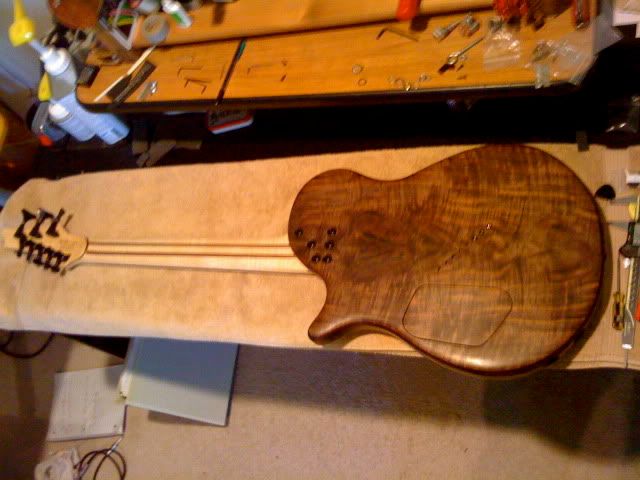
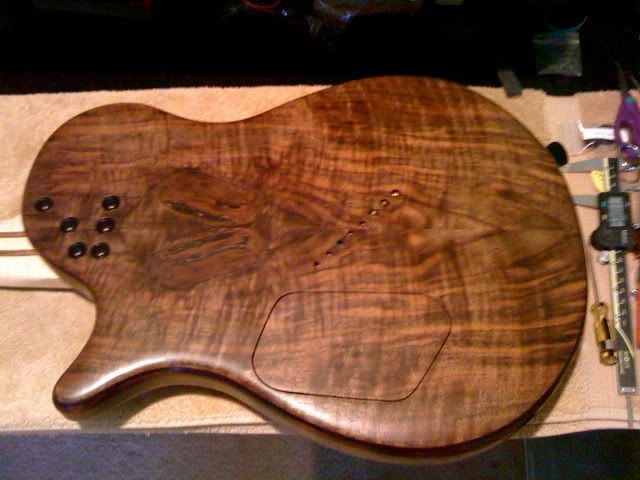
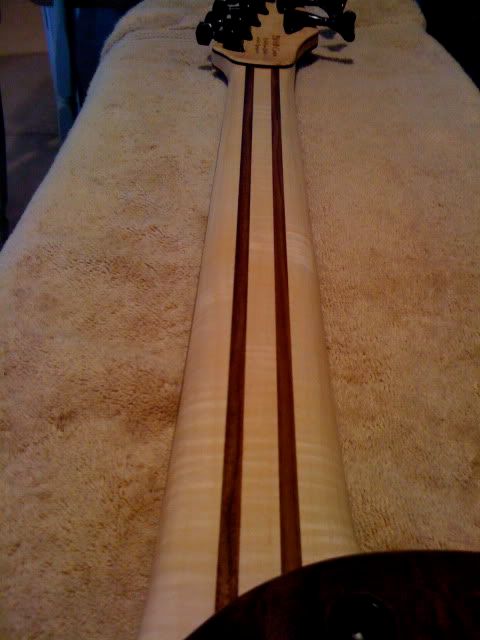
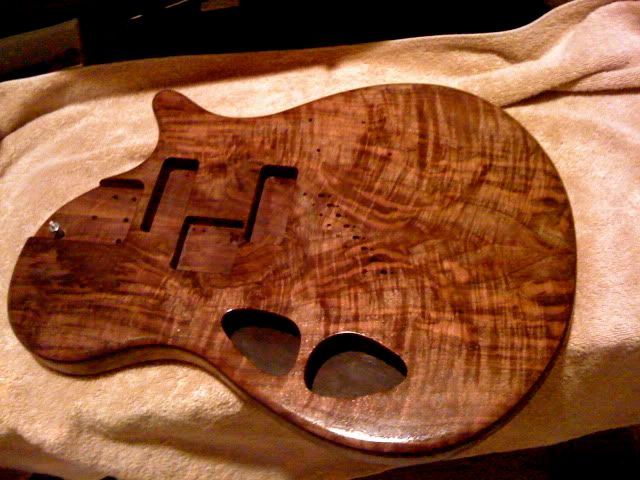
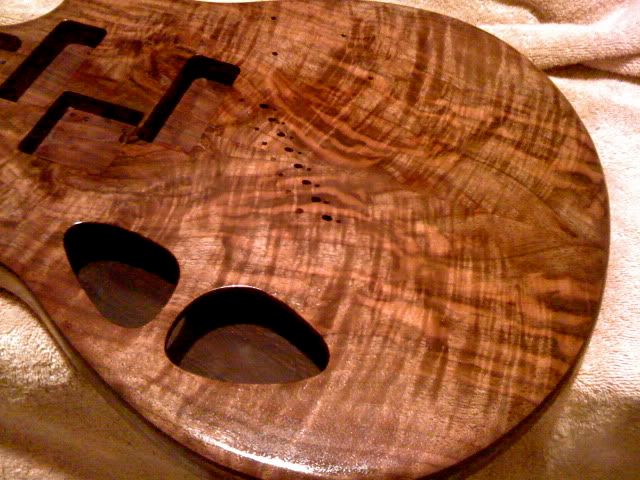
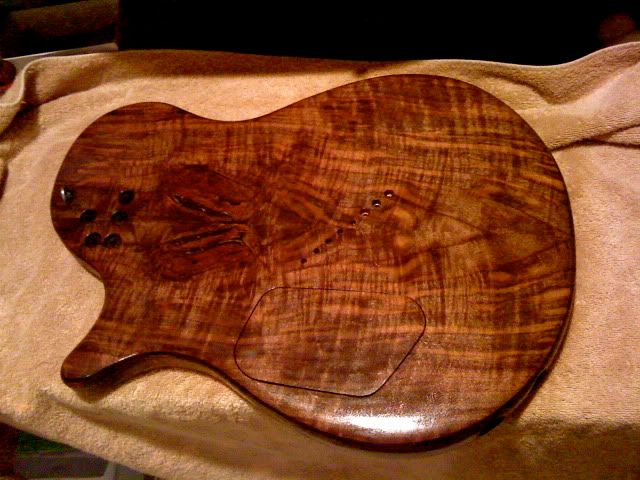
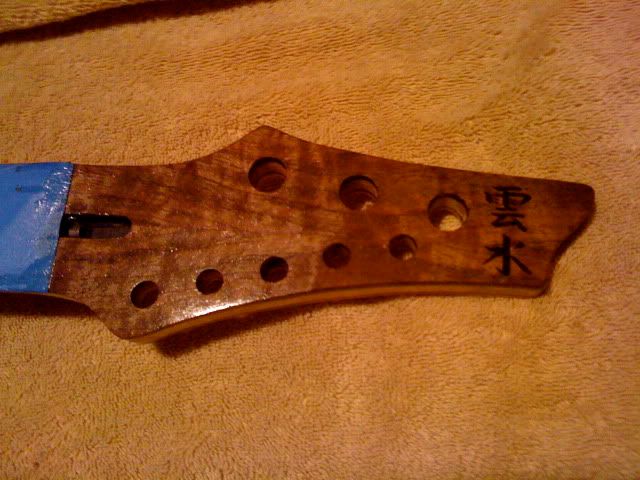
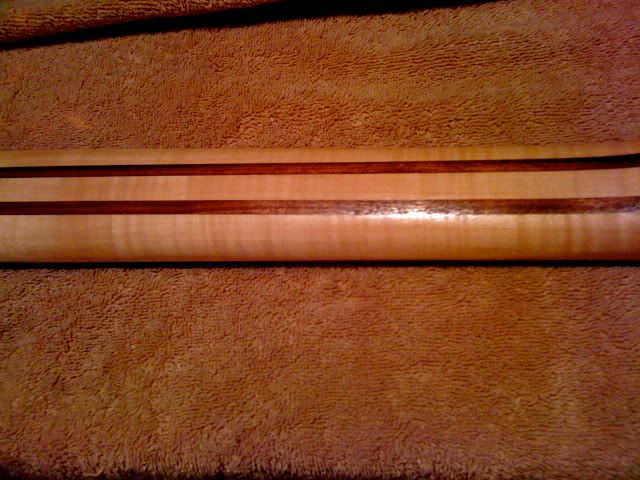
Which Classical Shape Is Nicer?
in Put it to a vote
Posted
Left one - just because.